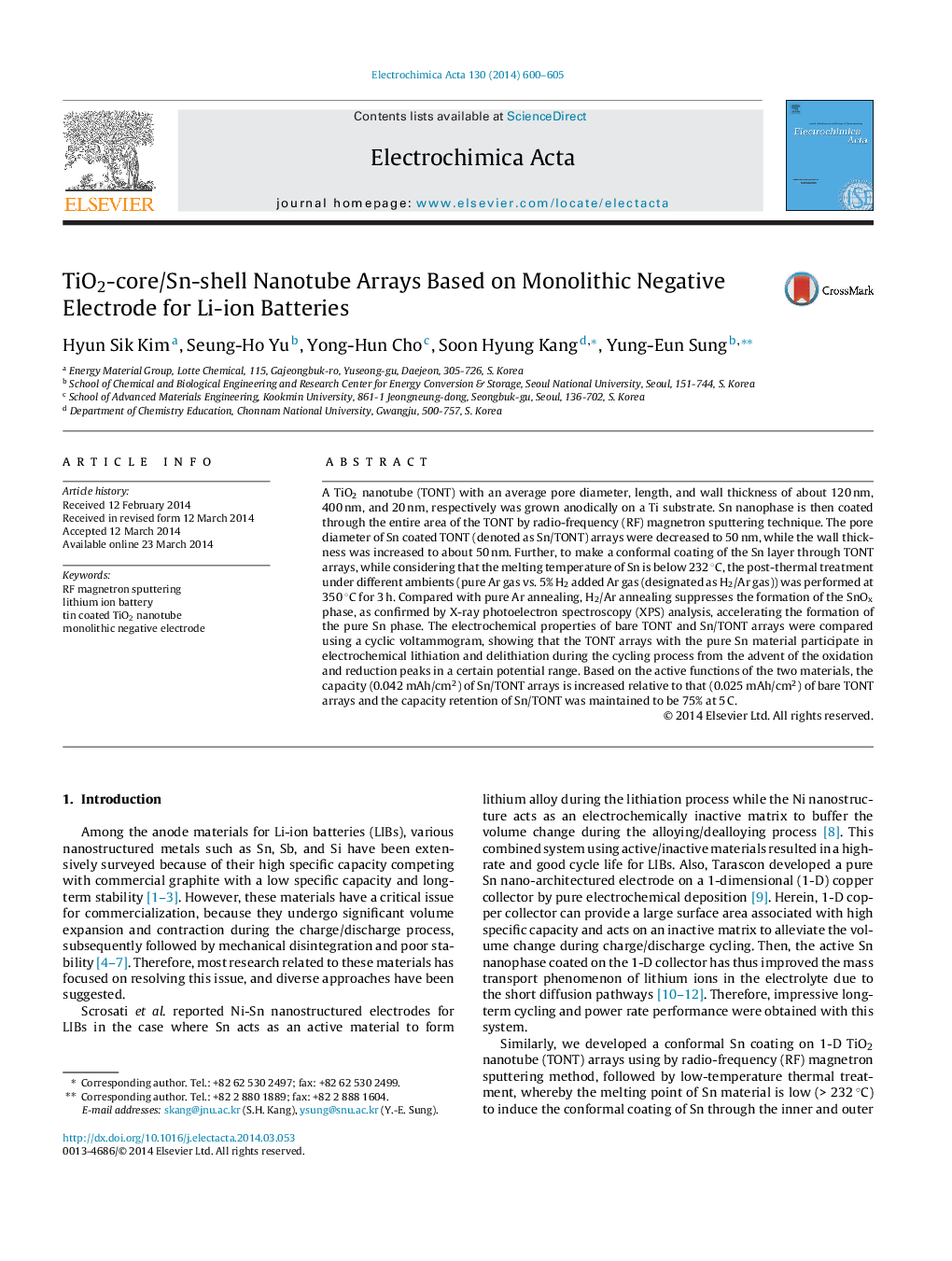| Article ID | Journal | Published Year | Pages | File Type |
|---|---|---|---|---|
| 185897 | Electrochimica Acta | 2014 | 6 Pages |
A TiO2 nanotube (TONT) with an average pore diameter, length, and wall thickness of about 120 nm, 400 nm, and 20 nm, respectively was grown anodically on a Ti substrate. Sn nanophase is then coated through the entire area of the TONT by radio-frequency (RF) magnetron sputtering technique. The pore diameter of Sn coated TONT (denoted as Sn/TONT) arrays were decreased to 50 nm, while the wall thickness was increased to about 50 nm. Further, to make a conformal coating of the Sn layer through TONT arrays, while considering that the melting temperature of Sn is below 232 °C, the post-thermal treatment under different ambients (pure Ar gas vs. 5% H2 added Ar gas (designated as H2/Ar gas)) was performed at 350 °C for 3 h. Compared with pure Ar annealing, H2/Ar annealing suppresses the formation of the SnOx phase, as confirmed by X-ray photoelectron spectroscopy (XPS) analysis, accelerating the formation of the pure Sn phase. The electrochemical properties of bare TONT and Sn/TONT arrays were compared using a cyclic voltammogram, showing that the TONT arrays with the pure Sn material participate in electrochemical lithiation and delithiation during the cycling process from the advent of the oxidation and reduction peaks in a certain potential range. Based on the active functions of the two materials, the capacity (0.042 mAh/cm2) of Sn/TONT arrays is increased relative to that (0.025 mAh/cm2) of bare TONT arrays and the capacity retention of Sn/TONT was maintained to be 75% at 5 C.
